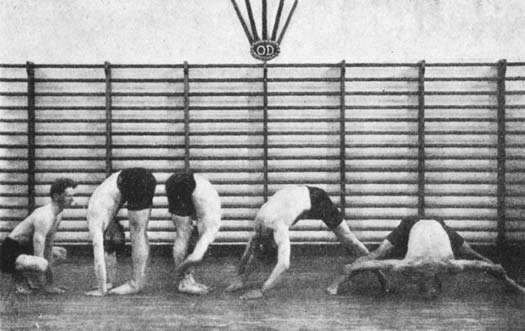MILO, Tolkien, and Why Dan Brown is Rich
Another classic from the archives!
Dan Brown is rich because, like MILO, he understands symbolism.
 The villain of Brown’s The Lost Symbol, Mal’akh is a demon—or an angel. That is what his tattoos reveal. His feet are decorated with the talons of a hawk. His legs are tattooed as the pillars Boaz and Jachin that supported Solomon’s temple. His chest is covered with a double-headed phoenix. “I am an artifact,” he tells himself. “An evolving icon.”
The villain of Brown’s The Lost Symbol, Mal’akh is a demon—or an angel. That is what his tattoos reveal. His feet are decorated with the talons of a hawk. His legs are tattooed as the pillars Boaz and Jachin that supported Solomon’s temple. His chest is covered with a double-headed phoenix. “I am an artifact,” he tells himself. “An evolving icon.”
Dan Brown is rich because, like MILO, he understands symbolism.
Just look at the hero of his thrillers, Robert Langdon, Professor of Religious Symbology, Harvard University. Nobody in the modern academy is a professor of religious symbology!
Jordan B. Peterson, Professor of Psychology at the University of Toronto, might come close with his Maps of Meaning: The Architecture of Belief. But even he calls himself a scientist, not a symbologist, almost as if it were too embarrassing to admit belief in the power of symbols and signs.
It would be easy to blame Jacques Derrida and the other postmodernists, but the embarrassment had set in long before Of Grammatology became required reading in what used to be called literature courses. J.R.R. Tolkien complained about it throughout his career.
Think about it. What kind of stories are rich in symbolism? Myths. Fairy stories. Stories for children. Like Pinocchio. Or The Lord of the Rings.
“An overgrown fairy-story, a philological curiosity—that is, then, what The Lord of the Rings really is,” wrote Edmund Wilson in 1956. “Dr. Tolkien has little skill at narrative and no instinct for literary form…. An impotence of imagination seems to me to sap the whole story. The wars are never dynamic; the ordeals give no sense of strain; the fair ladies would not stir a heartbeat; the horrors would not hurt a fly.”
And the Orcs aren’t even scary.
Critics have had similarly scathing words for Dan Brown—and MILO.
Geoffrey K. Pullum, Professor of General Linguistics at the University of Edinburgh, describes Brown as “one of the worst prose stylists in the history of literature…. Never mind the ridiculous plot and the stupid anagrams and puzzle clues as the book proceeds, [The Da Vinci Code] is a terrible, terrible example of the thriller-writer’s craft.”
Compare the press’s comments on MILO’s [2017] tour in Australia.
“You’ve obviously done a tremendous job in building up a personal brand,” Michael Koziol from the Sydney Morning Herald acknowledged during MILO’s press conference at Parliament House. “You say the outrageous things, you wear the weird clothes and the dark glasses and all that. I’m wondering…do you genuinely believe all the things that you claim to, or are you now essentially living out a caricature?”
Perhaps better—an archetype?
“The one who called himself Mal’akh pressed the tip of the needle against his shaved head, sighing with pleasure as the sharp tool plunged in and out of his flesh. The soft hum of the electric device was addictive…as was the bit of the needle sliding deep into his dermis and depositing the dye. I am a masterpiece.”
 The villain of Brown’s The Lost Symbol, Mal’akh is a demon—or an angel. That is what his tattoos reveal. His feet are decorated with the talons of a hawk. His legs are tattooed as the pillars Boaz and Jachin that supported Solomon’s temple. His chest is covered with a double-headed phoenix. “I am an artifact,” he tells himself. “An evolving icon.”
The villain of Brown’s The Lost Symbol, Mal’akh is a demon—or an angel. That is what his tattoos reveal. His feet are decorated with the talons of a hawk. His legs are tattooed as the pillars Boaz and Jachin that supported Solomon’s temple. His chest is covered with a double-headed phoenix. “I am an artifact,” he tells himself. “An evolving icon.”
It is up to Professor Langdon to decipher the signs scattered across Washington, D.C., by Andros—Greek for “man”—in his quest for transformation into Moloch, Lucifer, the Angel of Light. Mal’akh’s tattooed fingertips quite literally hold the key, the Lost Symbol of the Masons, the Hand of the Mysteries.
And what is the Hand? According to Langdon: “A formal invitation to pass through a mystical gateway and acquire ancient secret knowledge—powerful wisdom known as the Ancient Mysteries…or the lost wisdom of all the ages.”
Tolkien based his legendarium on a similar quest. “Eala earendel, engla beorhtast, ofer middangeard monnum sended,” he read in the Old English poem known as Christ I. “Hail, Earendel, brightest of angels, sent to men above Middle-earth,” he translated.
Who was Earendel? As Professor Tom Shippey explains in The Road to Middle-earth, the word in Old English is strange, older than the context in which it appears. It seems to be the name of a star or a planet, but in Middle German it became the name of a pagan king’s son who is shipwrecked in the Holy Land and returns to his people to convert them to Christianity.
In Tolkien’s telling, Earendel became Ëarendil, the half-Man, half-Elf bearer of a Silmaril or living jewel who sailed West to the Blessed Realm of the Valar to plead on behalf of Middle-earth that they deliver it from the power of Morgoth, alias Melkor, the most powerful of the Ainur before he revolted against the Creator, Ilúvatar.
But Ëarendil—as Tolkien explained to one of his readers almost as if he believed his own symbolism— “being in part descended from Men, was not allowed to set foot on Earth again, and became a Star shining with the light of the Silmaril, which contained the last remnant of the unsullied light of Paradise, given by the Two Trees before their defilement and slaying by Morgoth.” The savior of the two races, Ëarendil was blessed—or doomed—to live in exile as an angel of light.
“Balderdash,” as Wilson would put it. “Juvenile trash.” Or is it?
Even more bewildering to most critics than his expletives and jokes, MILO’s costumes and settings for his shows seem to make no sense.
“There were smoke machines, flashing lights and loud music,” Luke Kinsella reported from Melbourne. “The scene was set… Donning tinted glasses, a long fur coat and an excessive amount of jewelry, Milo appeared with his arms stretched out, like Christ the Redeemer holding a glass of champagne.”
How else should MILO appear? Half-Greek, half-English, half-Catholic, half-Jewish, gay, white and married to a black man, MILO is more than just an existential threat to the SJW outrage machine. He is symbology incarnate, a story come to life.
Does he take his costumes seriously? Yes—and no, because he is also the story-teller, like Dan Brown. Or Tolkien. Both inside and outside the story at the same time. Both author and character, actor and mask.
Like Mal’akh, the secret is in his hands. “If you cut my hands off, you could buy a house,” MILO told one reporter, flashing his rings. One is a scorpion. Two are snakes, one with emeralds and diamonds. One is a dragon. Another is a rose. All powerful symbols. All made of gold.
Precious? Or perilous? Professor Langdon would know. Do you?
—Originally published December 18, 2017, on Dangerous.com. Reprinted with permission.
For more on Milo’s embodied symbolism, see The MILO Chronicles.







This comment has been removed by the author.
ReplyDeleteThank you, I did not know this about the hand!
Delete